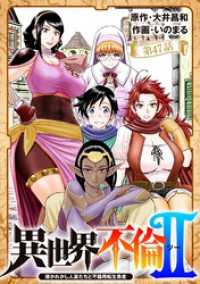- ホーム
- > 洋書
- > 英文書
- > Politics / International Relations
Full Description
The fourth edition of this popular core textbook provides wide-ranging coverage of the structure, workings, policies and performance of international organizations such as the UN, EU, IMF and World Bank. Such organizations have never been so important in addressing the challenges that face our increasingly globalised world. This book introduces students to theories with which to approach international organizations, their history, and their ability to respond to contemporary issues in world politics from security and defence and climate change, to trade, migration and refugees, human rights protection, and international development. Underpinning the text is the authors' unique model that views international organizations as actual organizations. Reacting to world events, political actors provide the 'inputs' which are converted by the political systems of these organizations into 'outputs' that achieve varying levels of real-world impact and effectiveness.
This is the perfect text for undergraduate and postgraduate students of politics and international relations taking courses on international organization and global governance, as well as essential reading for those studying the UN, the EU and globalization.
New to this Edition:
- Draws on the most recent research in the field and considers some of the significant world events of the last decade to ensure that the book is completely up to date.
- New separate chapters considering NATO, international organizations in the field of migration and refugees as well as a new chapter on regional organizations such as the African Union, ASEAN and MERCOSUR.
- Fully accounts for the challenges to international organizations by the emerging powers, the Trump administration, geopolitics and crises of legitimacy.
Contents
1. Introduction
PART I THEORY AND HISTORY OF INTERNATIONAL ORGANIZATIONS
2. Theories of International Organizations
3. History of International Organizations
PART II POLICY-MAKING IN INTERNATIONAL ORGANIZATIONS
4. International Organizations as Political Systems
5. Input: Actors' Demands and Support
6. Conversion: Decision-making in International Organizations
7. Output: What International Organizations Produce
PART III ACTIVITIES OF INTERNATIONAL ORGANIZATIONS
8. Peace, Security and War
9. Trade, Development and Finance
10. Climate and the Environment
11. Migration and Human Rights
12. Regional Cooperation
PART IV CONCLUSION
13. The Future of International Organizations
-

- 電子書籍
- 異世界不倫 Ⅱ~導かれし人妻たちと不器…
-

- 電子書籍
- 【分冊版】ゾンビのあふれた世界で俺だけ…






